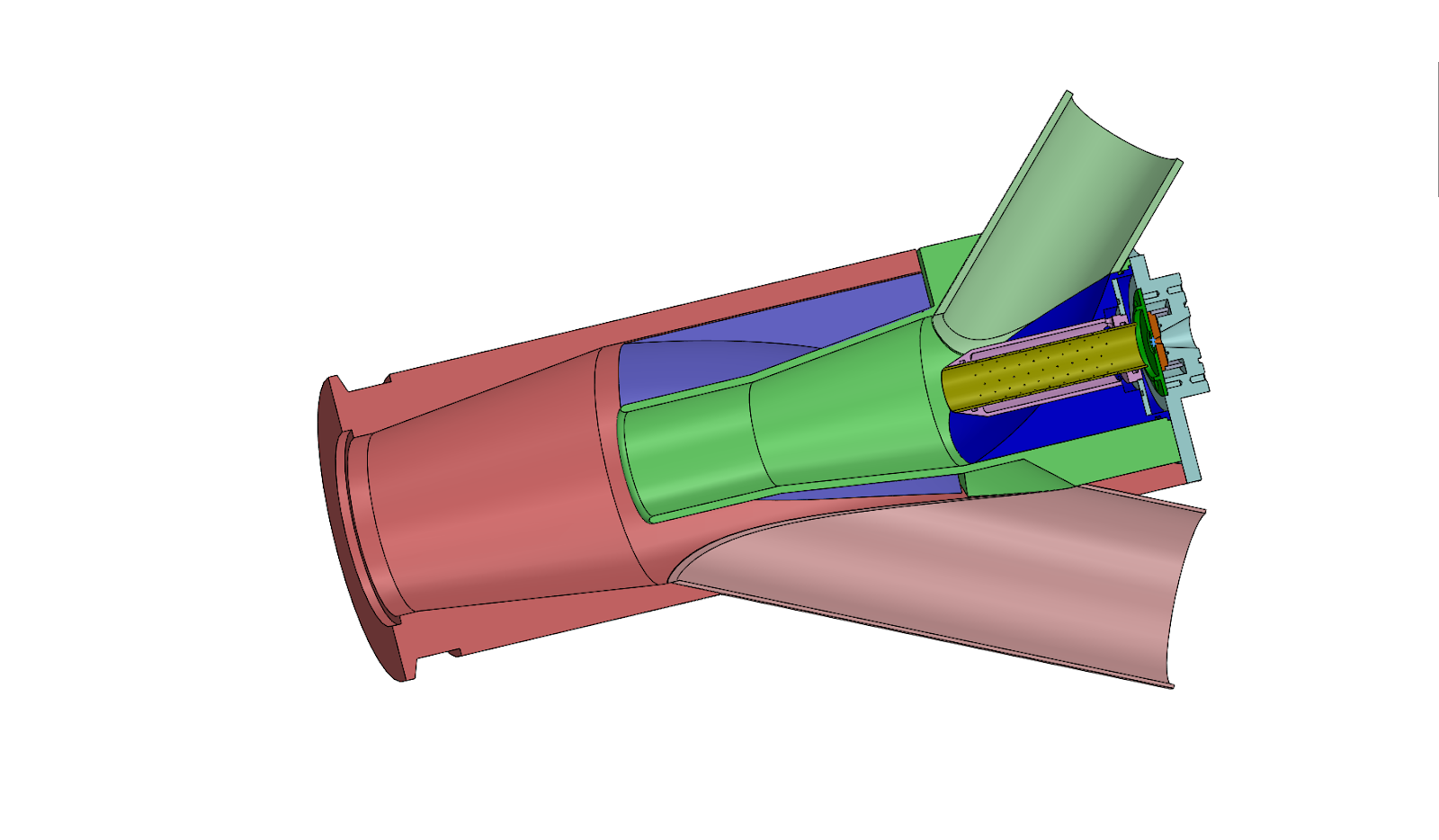Continued development of the GPIT (GV Pod Inlet Test) Project
During FY2019, we focused on design of the flow diverter in order to minimize the length of the tertiary duct, where modeling showed the largest potential for wall contacts and a resulting small reagent loss. We derived a new design, based on GPIT I data and GPIT II Computational Fluid Dynamics Analysis completed by Clarkson University, which not only allows shortening the tertiary inlet duct by 25% but also allow the diverter to be machined rather than 3D printed, which allows for better material choices, and it is modular, which means it can be adapted to multiple instruments and pod nosecone configurations. The primary and secondary ducts are high conductivity and flow velocity controlled, while the tertiary duct allows for surface layer separation through differential pumping. The instrument interface is a variable orifice to enable inlet flow control. The final inlet design iteration is pending more vendor supplied details on target instrument (custom TOFwerk HTOF, see below).
We acquired and tested parts of the hardware/software to ensure basic operation of all of the required subsystems. It is still our goal to complete the inlet testing during the next possible ARISTO opportunity on the Gulfstream-V where the pods are deployed.
We also assessed the conceptual fitment of a possible instrument platform (ToFWerk-HRToF commercially available ion analyzer) into the GV pod. We determined that fitment of the standard instrument into the pod will require modifying the ionization chamber. This is possible and would be done in collaboration with ToFWerk. A conceptual model of the analyzer together with the inlet components, pumps, required gases and flow controls, temperature controls, and subcomponents shows that the inlet and a state of the art CIMS instrument does fit into the available space.
Contact
Please direct questions/comments about this page to:
Carl Drews
NSF NCAR | Research IT | ACOM
